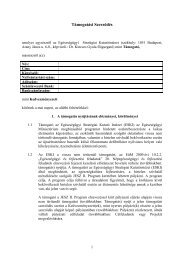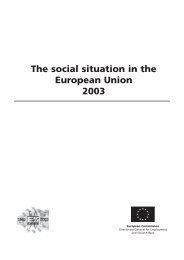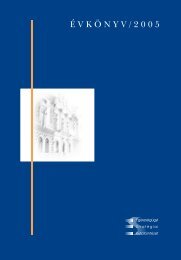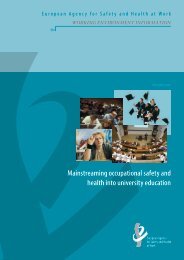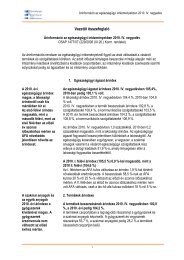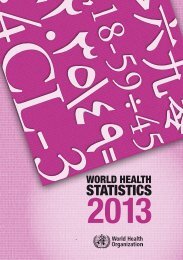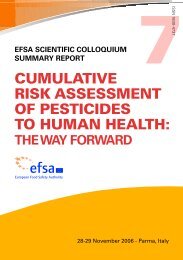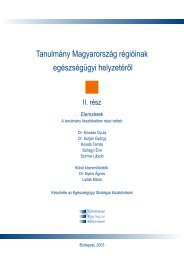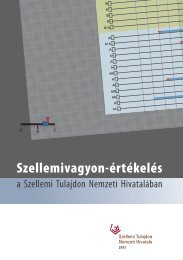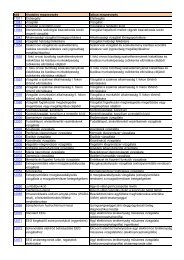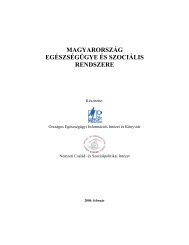WHO Technical Report Series, No. 981 - World Health Organization
WHO Technical Report Series, No. 981 - World Health Organization
WHO Technical Report Series, No. 981 - World Health Organization
Create successful ePaper yourself
Turn your PDF publications into a flip-book with our unique Google optimized e-Paper software.
Annex 3<br />
Table continued<br />
Documentation required<br />
1. (S.4.1) A copy of the proposed API specifications (of the FPP manufacturer) dated<br />
and signed by authorized personnel and a comparative table of currently accepted<br />
and proposed specifications. In addition, if the change has resulted from a revision<br />
to the API manufacturer's specifications, a copy of the API specifications (of the API<br />
manufacturer) dated and signed by authorized personnel and a comparative table<br />
of currently accepted and proposed specifications.<br />
2. (S.4.2) Copies or summaries of analytical procedures, if new analytical procedures<br />
are used.<br />
3. (S.4.3) Copies or summaries of validation or verification reports issued by the FPP<br />
manufacturer, if new analytical procedures are used.<br />
4. (S.4.3) Where an in-house analytical procedure is used and a pharmacopoeial<br />
standard is claimed, results of an equivalence study between the in-house and<br />
pharmacopoeial methods.<br />
5. (S.4.4) Description of the batches, certificates of analysis or batch analysis report,<br />
and summary of results in tabular format, for at least one batch if new tests and/or<br />
analytical methods are implemented.<br />
6. (S.4.5) Justification of the proposed API specifications (e.g. test parameters,<br />
acceptance criteria, or analytical procedures).<br />
7. (P.2) Where changes have occurred to the particle size criteria of an insoluble API or<br />
wherever particle size is critical, evidence is provided that the changes do not affect<br />
the in vitro release properties and bioavailability of the FPP. In general, it is sufficient<br />
to provide multipoint comparative dissolution profiles (in three media covering the<br />
physiological range (pH 1.2 or (0.1N HCl), 4.5 and 6.8) without surfactant) for one<br />
batch of FPP manufactured using API that meets the proposed criteria; one batch of<br />
FPP manufactured using API that meets the currently accepted criteria; and data on<br />
the FPP batch used in the registration bioequivalence study. However, if the routine<br />
dissolution medium contains a surfactant, the applicant should contact <strong>WHO</strong>/PQP<br />
for advice. For changes to the polymorph of an insoluble API the applicant should<br />
contact <strong>WHO</strong>/PQP for advice before embarking upon any investigation.<br />
8. Copy of the APIMF amendment acceptance letter.<br />
Description of change<br />
Conditions to<br />
be fulfilled<br />
Documentation<br />
required<br />
<strong>Report</strong>ing<br />
type<br />
16 Change to the analytical procedures used to control the API by the FPP<br />
manufacturer involving:<br />
16a<br />
change in an analytical<br />
procedure as a result<br />
of a revision to the<br />
officially recognized<br />
pharmacopoeial<br />
monograph to which the<br />
API is controlled.<br />
<strong>No</strong>ne 1–3 AN<br />
continues<br />
121



